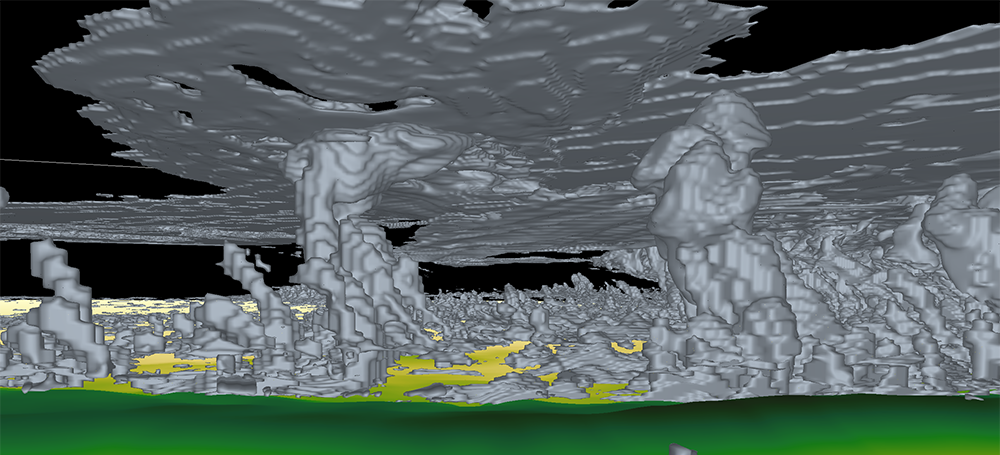LASSO-CACTI Production Data Set Available for Users
Published: 31 August 2023
Editor’s note: William Gustafson, principal investigator for the Large-Eddy Simulation (LES) ARM Symbiotic Simulation and Observation (LASSO) activity, provided the following post.

The production version of the LASSO data set that provides simulations of deep convection in support of the Cloud, Aerosol, and Complex Terrain Interactions (CACTI) field campaign is now available to users. As reported in March 2023, the bulk of the LASSO-CACTI simulations are complete. The LASSO and ARM Data Center teams have been working to formally publish all the simulations, which amount to 2 petabytes of information.
We are excited to see how researchers will take advantage of these simulations to advance understanding of convective processes, improve climate model parameterizations, better deploy and interpret observations, and other possibilities we likely have not yet imagined.
The LASSO-CACTI library consists of ensembles of simulations for 20 case dates based on sampling different (re)analysis products for forcing data. These mesoscale ensembles use nested domains with grid spacings of 7.5 and 2.5 kilometers. From these ensembles, additional simulations are done with an LES methodology for nine of the case dates. These LES simulations use nested domains with 500- and 100-meter grid spacings.
All mesoscale and LES simulations are assessed through comparisons with regionally representative observations within the vicinity of the ARM Mobile Facility. The quality of each simulation is quantified using skill scores. The skill scores characterize the level of agreement of convective area development, through comparison with satellite brightness temperatures; local convective intensity, through comparison with radar echo-top heights; and surface rainfall, determined from radar data. These scores are presented in plots and available to download in CSV files. In addition, plots are available that compare simulated and observed soundings.

Fully published simulations and their accompanying diagnostics are available via the new LASSO-CACTI version of the Bundle Browser. Currently, a subset of simulations are visible as the Bundle Browser is being developed and the simulations get archived; the list will grow over time.
In the meantime, all completed simulations are staged on ARM’s Cumulus high-performance computing cluster and are available by sending an email request to lasso@arm.gov. Users can access the filespace on Cumulus either through direct terminal access or via a JupyterHub server. (Please note: Users must have an active ARM account and request access to the Cumulus filespace. Learn more about requesting access.)
More details about LASSO-CACTI are available in the LASSO-CACTI Technical Document. This living document will evolve as additions are made to the LASSO-CACTI product. A brief overview is also available via these slides from the August 2023 Joint ARM User Facility/Atmospheric System Research (ASR) Principal Investigators Meeting.
Keep up with the Atmospheric Observer
Updates on ARM news, events, and opportunities delivered to your inbox
ARM User Profile
ARM welcomes users from all institutions and nations. A free ARM user account is needed to access ARM data.


















